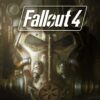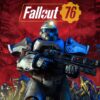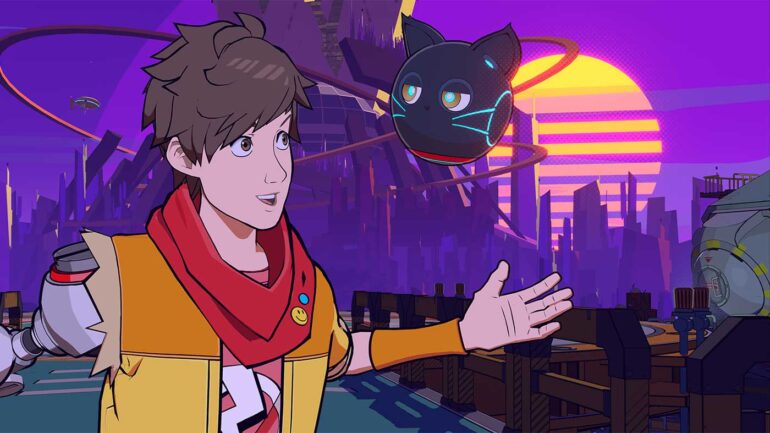When Hi-Fi Rush stealth dropped during the Xbox & Bethesda Developer Direct almost a month ago, it quickly got the gaming community talking with its uber-stylish visuals and innovative approach to rhythm-action gameplay – not to mention the fact that this raucous, cartoony rock-and-roll banger was coming to us from the faces behind The Evil Within and GhostWire Tokyo.
With that delightful shadow release still fresh on the mind and the downright excellent game very much occupying the better parts of my brain since, I was fortunate enough to get to chat with its Director, John Johanas, about what inspired the game, how it came to be and what it took to get it from concept to release. Have a read of that conversation below:
Press Start: Hi-Fi Rush is obviously very different to what gamers are used to seeing from Tango Gameworks, where did the concept come from and how has the experience been working on something that’s not spooky.
John Johanas: The concept for Hi-Fi Rush had been kicking in the back my head for a long time since joining the game industry, but I never felt like I knew exactly how to pull it off. The idea of fighting to the music seemed so natural, but it was only after my experience directing multiple projects could I put into a realistic vision how it could be achieved…or at least attempted to be achieved!
To be honest, working on something that isn’t horror, does feel like a breath of fresh air in a sense. Not that I don’t like horror (I’m still a big fan), but for a game that focuses on atmosphere and events at its forefront is not quite that game you jump in with ideas that are wacky and “fun.” You have to think within the context of the experience. But with Hi-Fi Rush we knew we were working on something over-the-top from the very beginning so that allowed us to really just have a good time thinking of crazy ideas that can be in the game without the pressure of keeping everything grounded.
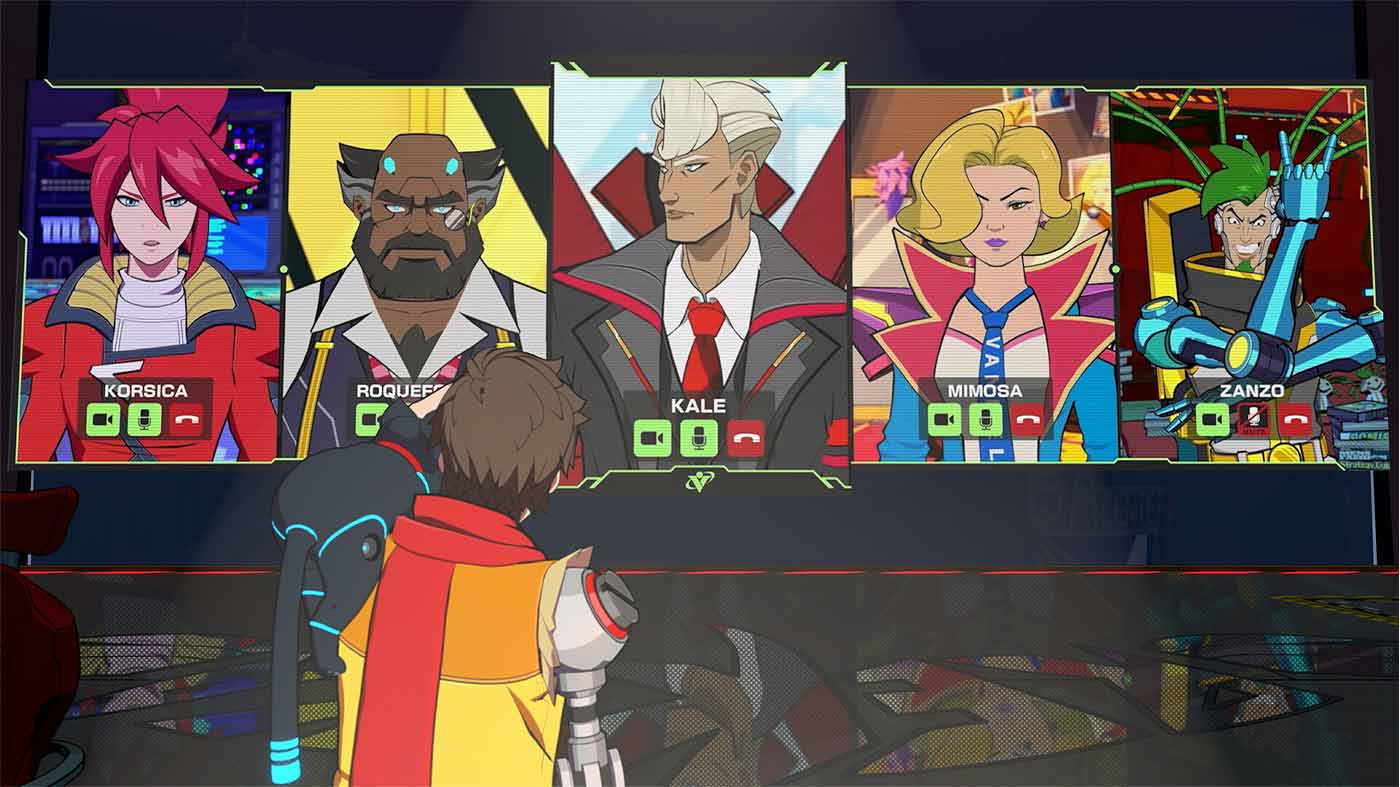
PS: It seems like Game Pass has become a great tool or platform for games that most would consider a little riskier or more bold, creatively. What sort of impact would you say it’s had on what you’ve done with Hi-Fi Rush?
JJ: From what we can see, Game Pass has definitely been a main driver of the conversation around the game. Obviously when you have a new type of game, you have to convince people to invest their time and/or money in it. But with Game Pass it’s essentially like a demo that you can keep playing.
For us, we were extremely confident in the game we had made and internally the hype behind it literally spread virally around the company as more people played and got their hands on it. So in that case, it was a great fit for gamers to try something new and just keep playing and getting the most out of the game.
For those games who knew of us for our horror experiences, there could have been some trepidation about jumping into an experience. I wouldn’t expect a knee jerk response to be a universally positive opinion about a rhythm action game made from the makers of the Evil Within. But with the extremely low barrier to entry, we could get the game in players hands and put any questions of its quality to rest.
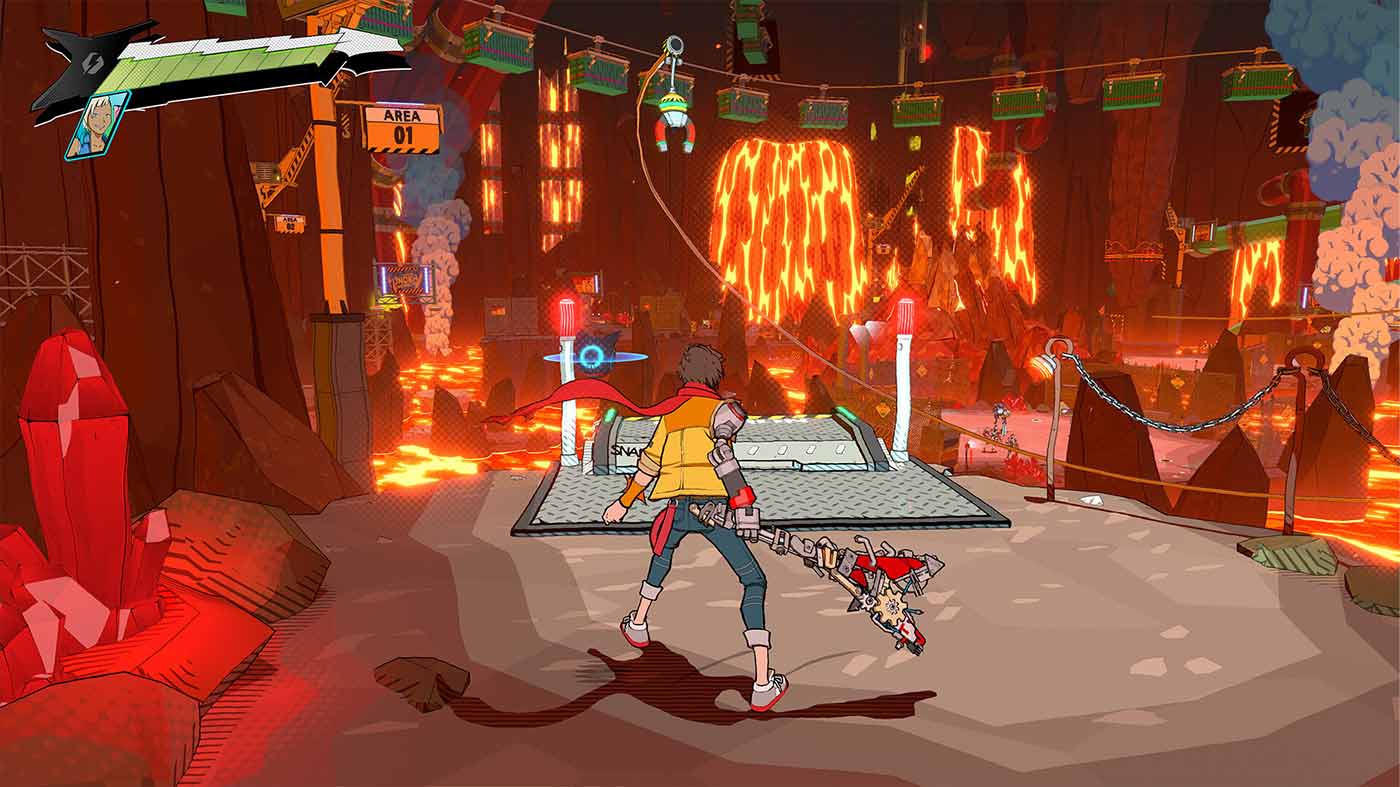
PS: How did you go initially pitching this game? It’s almost completely unlike anything we’ve seen from the Bethesda label – I’d love to know how that conversation went.
JJ: Well the original pitch was internally in the studio and I pitched it to my boss Mikami-san and our Producer from Bethesda that was visiting. The first thing out of my mouth was “This is probably not going to get past here since it’s the most un-Bethesda title I can imagine.”
However, the concept itself was intriguing from a game design perspective, but as you can imagine is a tough sell on paper. So we decided to have a small team (literally myself and our lead programmer) work on the core concept for the fight game loop and how everything would sync up to the music.
The prototype was a big success and a lot of fun on its own (and very close to what it is like in the final game). So when we finally went to pitch it, we not only had what was an interesting concept, but essentially proof of that concept. Still, I don’t doubt there was a big “will this really work?” floating in the room when we pitched it at Bethesda, but there was already positive word of mouth to convince people it was an idea worth pursuing.
Surprisingly, internally there was a lot of support for us making a game that was so different than our image was!
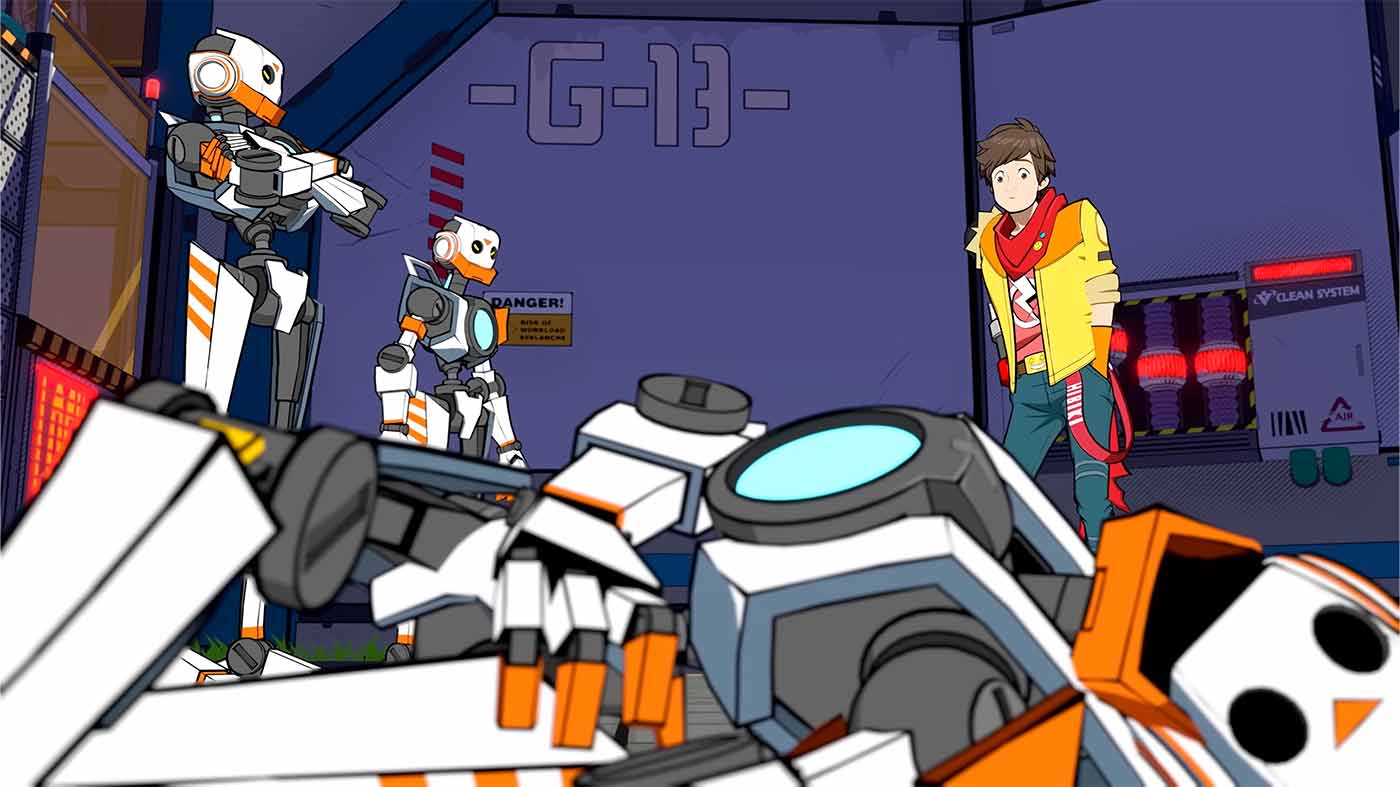
PS: Are there unique challenges in developing a game as different as this? Were there any benchmarks or comparisons you and the team used to know you were on the right track?
JJ: Overall this project had difficulties completely unique to its concept. Even members of the team who had worked on action games or music themed games saw that they needed to change their thinking of how to approach making it to reach our goal.
We tried not to compare it to other games too much since we wanted it to feel different, but I suppose the benchmark we kept coming back was always to see if it felt like the action and the music were matching. Internally we knew things were always technically matching, but the experience needed to feel like you were performing a song as you fought, dodged and parried enemies. If we had someone play it and they didn’t get that impression we knew we needed to adjust something.
Animation, sound design, controls, and enemy AI always needed to be tweaked to reach that goal, and we never wanted to fall back on it just being “another action game” with some music playing in the background.
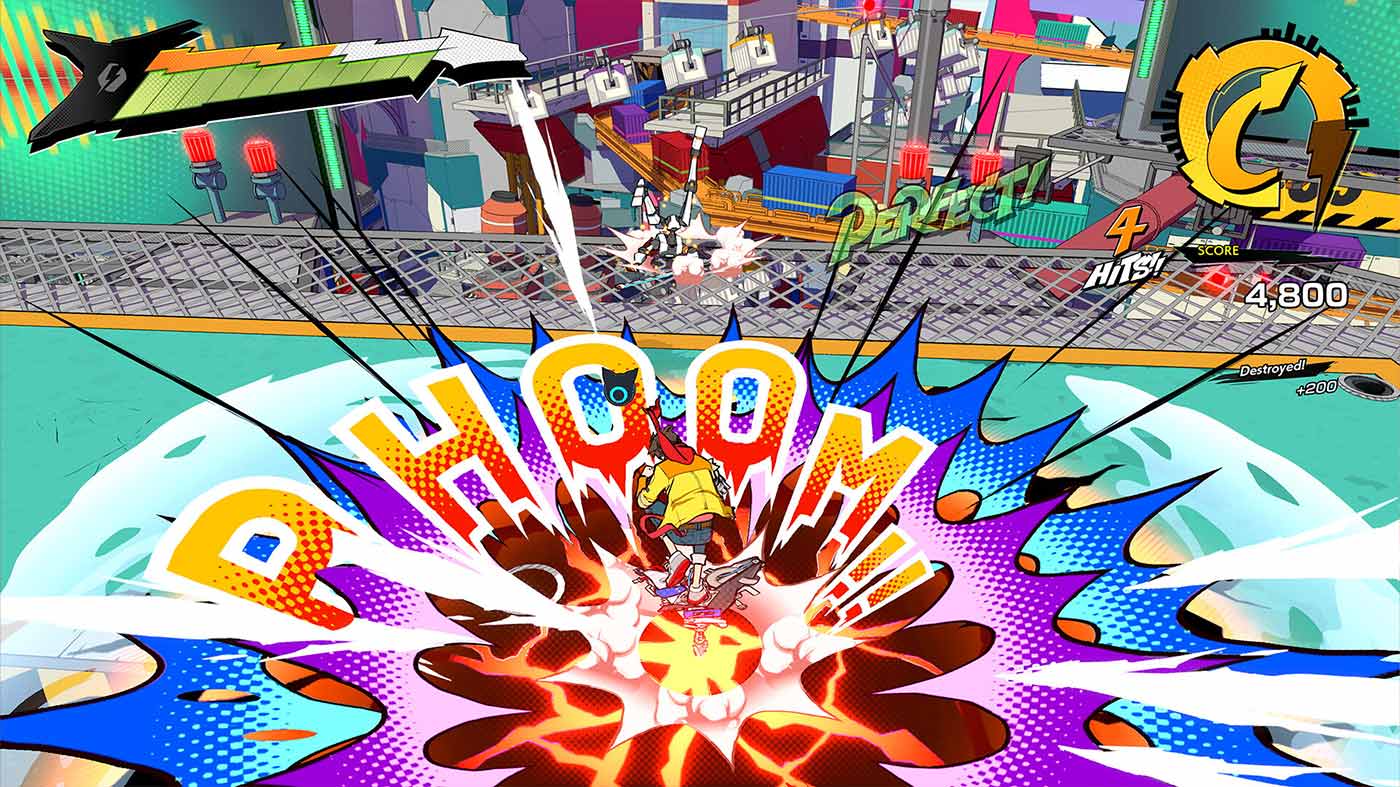
PS: The game’s obviously had a great reception from both critics and the public – how did the team feel in the lead-up to this dropping and how do you feel now that it’s out there?
JJ: Going into launch without anyone knowing anything is both equally nerve racking and somehow cathartic. Launching any project you are afraid of what people will think or if they will get it. But internally we knew we had something so special. The team was constantly playing and polishing things to the end, trying to put charm into every aspect of the game, and when every piece of the puzzle clicked at the end with the music, cutscenes, transitions, battle system it was just a blast to experience for a team that had been working on it for years.
So for that reason we were confident, that even if some people didn’t click with it, we knew we had something great and worth experiencing for those who played it.
The one benefit of it being a secret until it dropped was that there were no distractions that could come from revealing early. Some fans have knee jerk reactions to projects which can affect the development or change a project from its intended vision, but without that we just pushed dead ahead to our clear goal and didn’t have to worry about misconceptions or opinions that may have questioned us.
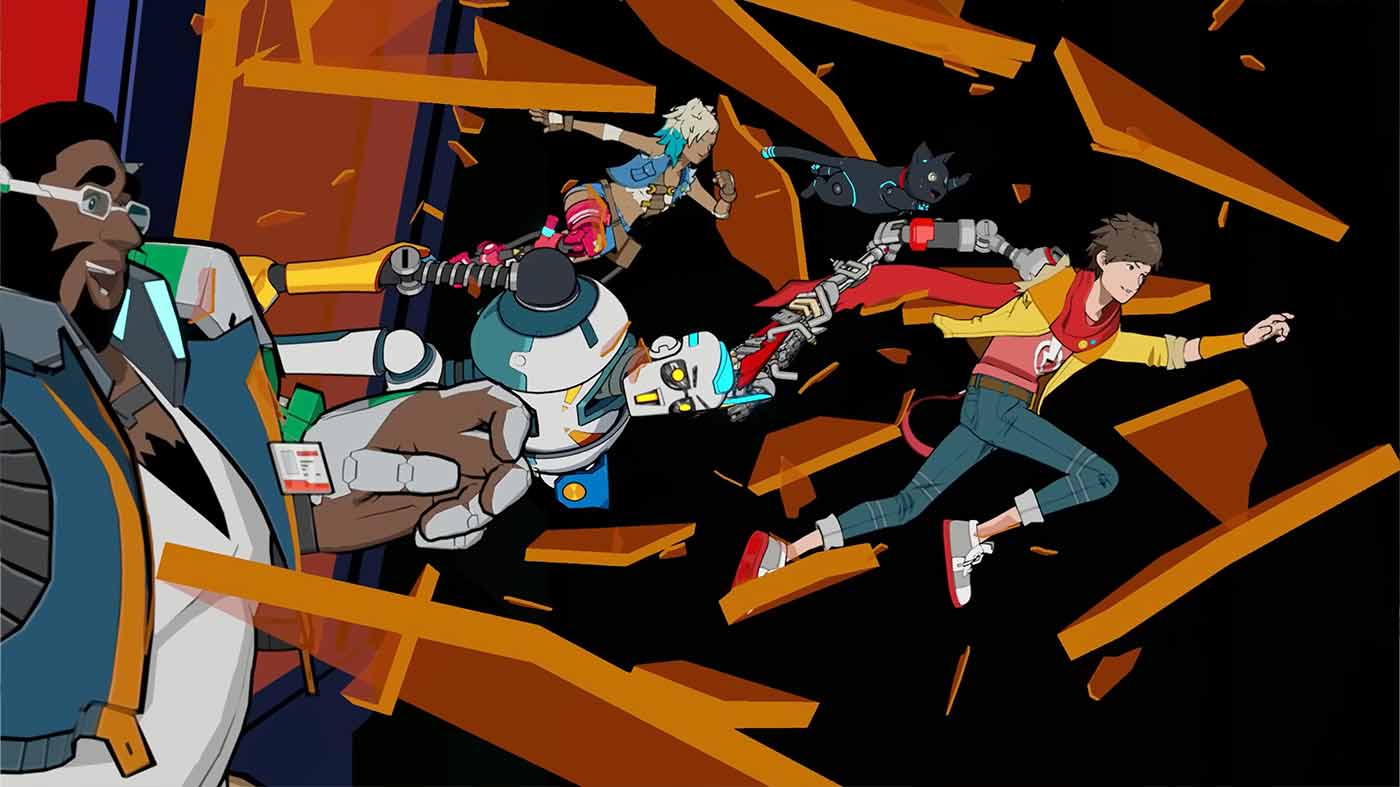
PS: One of the game’s big selling points is its rhythm-based combat, but it also does a great job of accommodating players who maybe aren’t as comfortable with precise rhythm – what steps did the team take to make sure as many people as possible would be able to play and enjoy Hi-Fi Rush?
JJ: Accessibility was at the top of the list when making the game. The early concept revolved around creating a system internally that syncs up your actions to the rhythm for you. The tricky thing was finding the balance rewarding and assisting players who needed the extra help.
Right from the beginning I did not want the player to be unable to do an action because of their lack of rhythm, but to have a positive result happen because they went with the rhythm. I think it’s easy to just have a success and failure state in the game, where the character wouldn’t do an action or trip, or something like that, but for us there was essentially “success” and “greater success.”
It was hard to convince some team members at first, but eventually they got on board. And luckily we are seeing that in player’s reactions when we see people who usually have difficulties with rhythm games, being able to enjoy the game and feel like they are playing well even if they might be playing without precise rhythm.
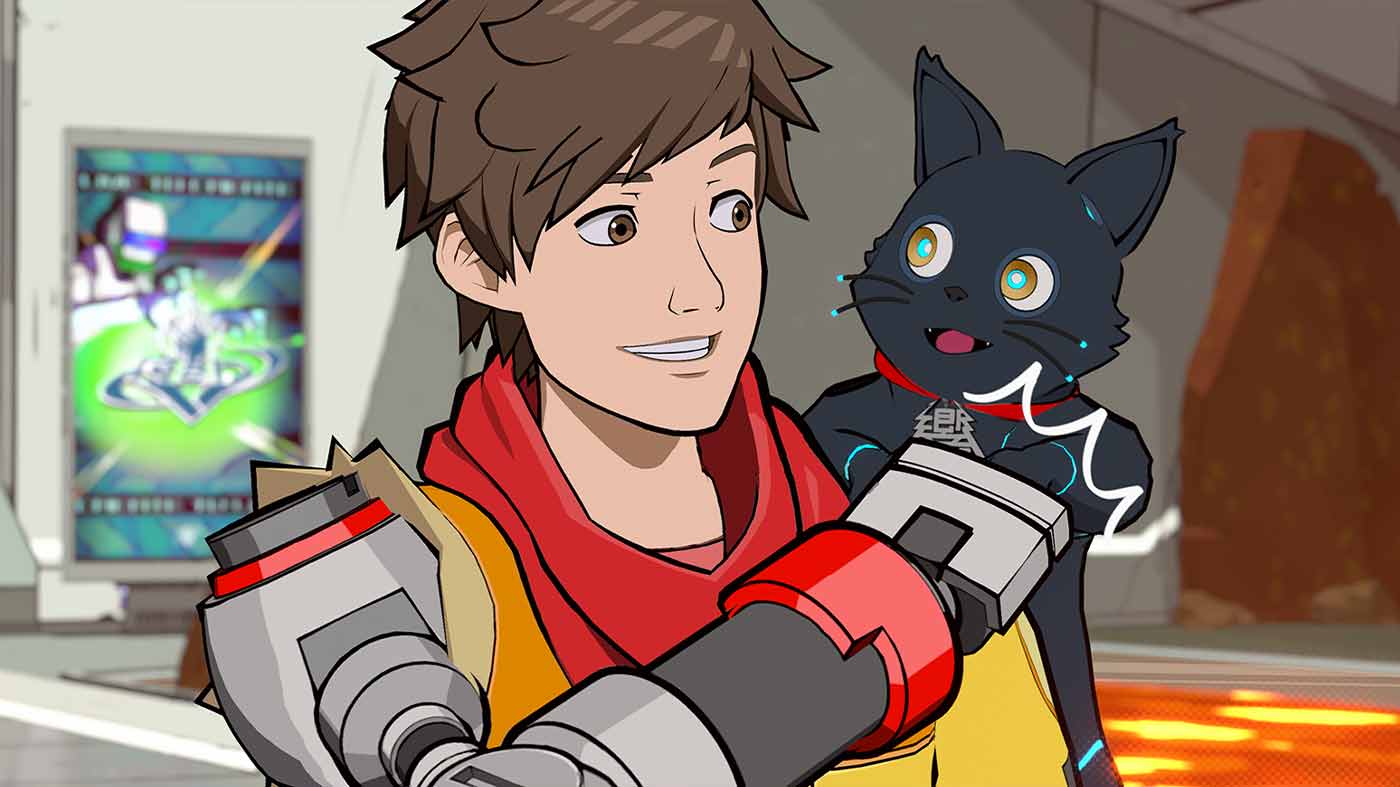
PS: There’s obviously a lot going on in Hi-Fi Rush both visually and sonically – what would you say are some of the biggest artistic influences on the overall style of the game?
JJ: The whole game is a weird love letter to the time period around the late 1990s/Early 2000s. From the silliness of it, to the look, we wanted it to feel like a throwback to a time when games were more focused on fun and were in an era of trying new interesting game ideas and visual styles, but before the productions got so large and games got to gigantic in scope.
So in that way we looked at games we remembered from that time period that experimented in a visual style. The games that we came up with were ones that players probably associate as well, Jet Set Radio, Viewtiful Joe, Okami… but also looking at character action games like Devil May Cry or Bayonetta, in which they were simple level based designs that focused on what they were good at rather than throwing everything gameplay idea.
But then we wanted to bring things up to spec with what gamers imagine now, so we put a lot of effort into pushing the visuals to a new version of stylization. We put an emphasis on fleshing out the characters with charm and personality, polishing up gameplay responsiveness, and giving the overall presentation a quick and modern feel which was very much inspired by the kinetic comedy action of filmmaker Edgar Wright.
PS: One of my favourite things about the game is the soundtrack – the handful of licensed songs is a stand-out bunch of tracks. How did it come to be that you were able to slot the likes of Nine Inch Nails, The Black Keys and The Prodigy into this wild idea for a game?
JJ: The setlist itself was a personal taste of mine that I felt captured the time period we were trying to emulate. I wrote up this long list of artists and songs that I would like to have in the game, and eventually when the mechanics were decided we figured out from a song structure or BPM, what would actually work. Then when we thought we had what we wanted we had to proceed with licensing.
Honestly (pun intended), I had no idea the process and just assumed it would be a lot of No’s left and right, but surprisingly almost all the artists we wanted we were able to get. Some, because of just straight cost got ruled out, or some maybe didn’t get what we were making but I was blown away that we were able to get the artist we did. Granted it did take a while and there was a lot of elbow nudging but the team helping out with licensing made what we thought the impossible happen.
The songs work within the game well, so I hope for players who don’t know the artists for generational reasons, it exposes them to something new, but also I hope that at some point the artists can see what we did with the songs and integrated them into the game to see how they can be interpreted and used in a new way!
Fans Reckon An Evil Within 3 Announcement Is Being Teased In Hi-Fi Rush
PS: Single-player, narrative driven games like this feel more rare every year, what keeps Tango putting its energy and effort into them?
JJ: The short answer: We don’t have any online programmers. Hah!
The long answer: I think the experiences we’ve been trying to make up until now just sort of naturally lend themselves to single player experiences. It’s something we have experience and feel capable of doing and never want to unnecessarily add in a feature that we don’t feel matches the experience. I would never rule it out though, if the experience we are trying to create would benefit from a multiplayer experience.
